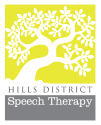Developmental Stuttering
Developmental stuttering, the most common form of stuttering, is a disruption in the fluency or rhythmic flow of speech. It often appears during early childhood between the ages of 2-4, and can persist into adulthood if natural recovery or early intervention have not taken place.
About Developmental Stuttering in Children
Children with developmental stuttering may present with one or a combination of the following characteristics of disfluent speech:
- REPETITIONS of sounds, syllables, words or phrases. E.g: b-b-b-baby; baby-baby-baby; that’s my- that’s my baby
- PROLONGATIONS: Where words or sounds are lengthened or stretched out e.g. mmmmore
- BLOCKS: Moments of silence when no sounds come out, usually with tension
- SECONDARY FEATURES: Non-verbal movements can also be associated with a stutter. E.g. excessive blinking, head movements, facial grimacing
There is a growing body of high level evidence indicating that the Lidcombe Program is considered in the treatment of stuttering in early childhood. There is also more research developing around the Westmead Program as an alternate treatment for older school age children with persistent stuttering.
What causes stuttering?
Stuttering is motor based (physical) in origin, although has genetic involvement (it can run in families). It is not an emotional problem and is not thought to be caused by psychological factors such as nervousness or stress, however, these types of situations can increase stuttering behaviours. Around 5% of children stutter.
Stuttering treatment options available at HDST
HDST strives to use evidence-based programs when conducting stuttering therapy. The stuttering therapy programs we provide for children at HDST include the Lidcombe Program and the Westmead Program.
About the Lidcombe Program
The Lidcombe Program is the gold standard treatment for stuttering in preschool and early school aged children. Many of our Speech Pathologists have undertaken Lidcombe Program Consortium Training. Check out this video from Australian Stuttering Research Centre on this fantastic program!
About the Westmead Program
The Westmead Program is an intervention that is used predominately with older school aged children that have been through rounds of the Lidcombe Program without success, and for children who have been treated successfully but have since relapsed.
There is a growing body of research indicating that the ‘syllable timed speech‘ technique (used in the Westmead Program) may be effective, particularly in younger clients. Children are taught the simple, rhythmic technique to achieve fluent, stutter free speech during the first stage of the program, whilst learning to maintain stutter free speech in the second stage.

What to do whilst waiting for therapy?
- Give your child uninterrupted and relaxed times to talk to you
- Ignore the stutter and listen patiently
- Give your child time to finish what they’re saying and avoid finishing his/ her sentences
- Praise your child when they are fluent
- Don’t draw attention to the stutter or criticise your child’s speech
- Don’t let other people make comments on the stuttering or try to correct your child’s speech.
- Contact a Speech Pathologist if you are unsure of what to do, or if your child is becoming increasingly frustrated or upset.
